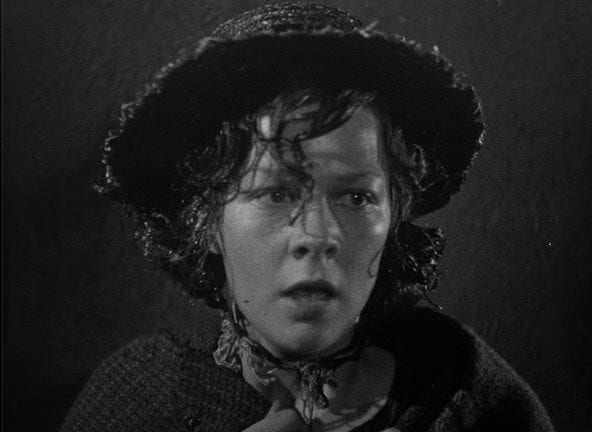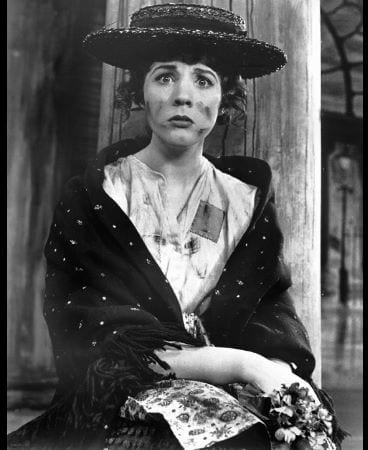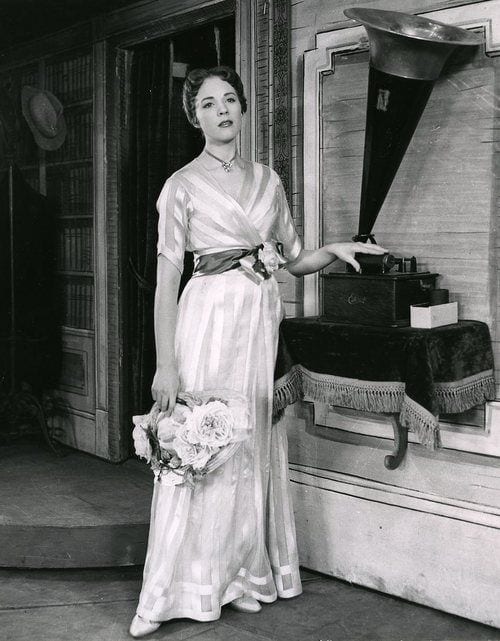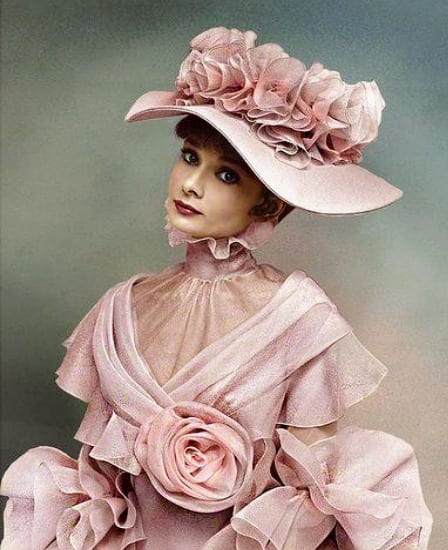Our very own Mrs. Debra Jolly is costume designer for ASPI’s upcoming production of My Fair Lady. As she shares the styles of living in the 1910s from head to toe, imagine dinners on the Titanic and garden parties at Downton Abbey, the elegance, tradition, and attention to detail. My Fair Lady is Eliza Dolittle’s very own runway!
Everyday Styles
For everyday style, it all comes down to class! Upper class would have spent most of their day changing clothes to fit the activity. A feminine and lightweight day dress might have a square neckline or shawl collar, a higher waist and narrow skirt, and an overskirt. Popular fabrics of chiffon, lace, and satin were sure to adorn an upper class lady. For men, their suits were of a similar style as we see today, including a jacket, vest, white shirt and tie. Some activities would require a more formal suit with a long jacket, striped pants, white shirt complete with a cravat, vest, gloves, and a top hot. The ensemble would also include spats (or spatterdashes), a footwear accessory used to protect shoes from rain and mud.
If someone was of the middle class, their wardrobe would be much the same as the upper class, but with less trim and sturdier fabrics. There would also not be as many clothing changes throughout the day as you would see with the upper class women.
Individuals of the lower classes would be seen in older styles of clothing, often mismatched, and made of sturdier fabrics. Women’s accessories would include aprons and shawls. Many men would wear vests or jackets at work, often with a cap and a neckerchief. Because most of their clothing was secondhand cast-offs from the upper classes, working clothes looked more formal than today.
The Hair
No pixie cuts or man buns here! Even bobbed, or chin length hair on a woman was still considered a rebellious style.
Popular women’s hairstyles included the pompadour. This entailed being puffed out and slightly up at the front. And hold onto your seats because women used false hair pieces, or “rats” made of hair combings formed into rolls, to create the Pompadour hairstyle. Another popular style was the Gibson girl, puffed out hair complemented with a bun, or knot, at the top of the head.
Other popular hairstyles included Marcel waves, similar to finger waves; frizzed bangs, as made popular by King Edward’s wife, Queen Alexandra; low buns called Psyche knots after the Greek goddess; and braided twists.
With the fashion of large hats, hairstyles had to be big enough and sturdy enough to support the hat. For evening or indoor activities, hairstyles were softer and less puffed out.
Men’s hair was not as involved as their counterparts. Men usually wore their hair trimmed short and slicked back with oil or petroleum jelly. They also had a “pompadour” style where the sides were short and the top longer and pushed up, akin to the 50s style or Elvis. Handlebar mustaches, named after their similarity to the appearance of handlebars on a bicycle, also were having their time to shine!
Go to Accessory
We all have something that we cannot leave the house without. A signature scent? Favorite watch? During the 1910s, the go to accessory for both men and women was a hat. Regardless of class status, women, even lower-class women, would never be seen outdoors without a hat.
Formal Night on the Town
Here comes the glitz and the glam! Formal evenings were occasions for ball gowns, often with trains and long gloves. The look would not be complete without accessories! From jewelry to hair adornments such as feathers, flowers and jeweled combs or hair bands, women and young ladies were dressed to the nines. Satin slippers and fans, opera capes or cocoon wraps (a large circle of fabric with short sleeves at the wrists), complete the look.
While not as adorned by accessories, from their formal tuxedos with tails, complete with white shirt, best, tie, gloves, along with a top hat and opera cape, the men were sure to look sharp!
Dare to Wear
Slacks were still strictly for men. A woman in anything resembling pants was very risque indeed. Thanks to the Russian Ballet for introducing fashions of an oriental style, including harem pants. Dress hemlines were also becoming shorter. Exposed shoes and ankles? Gasp! Working our way up, it was also more common for ladies to forgo corsets. Oh my!
Eliza on Stage
ASPI is bringing a special early 1900s touch to the stage. The upper-class ladies will have large hats, which the cast members will decorate themselves! The lovely Pam Loberger, cast member and local expert on historic fashion styles, will be leading a workday session to help them create the proper look.
Are there any styles from the 1910s that you wish would make a comeback?
Many thanks to Mrs. Debra Jolly for her contribution to this blog post! You can see her efforts as choreographer, costume designer, and lighting designer in ASPI’s production of My Fair Lady. So put on your best and join us for performance running March 20-22 and March 27-29. For more information check out https://abramsspotlightproductions.com/ or call the Box Office at (920)826-5852.









